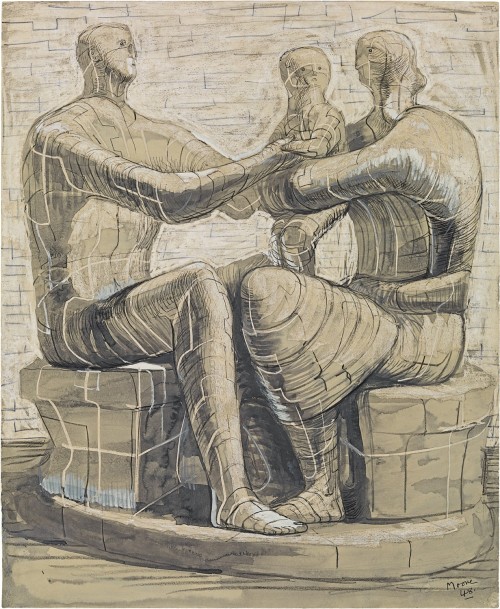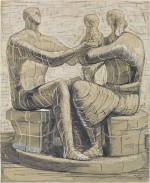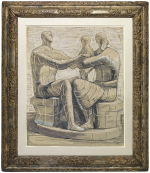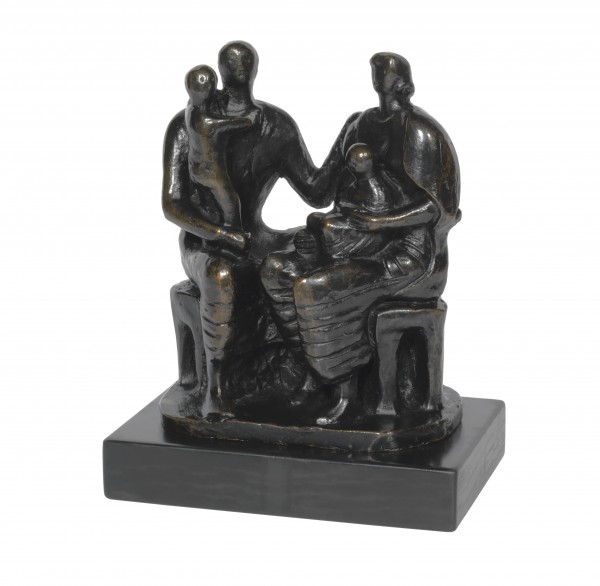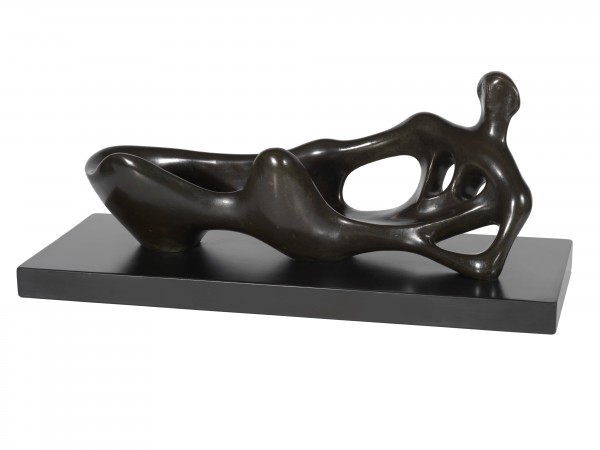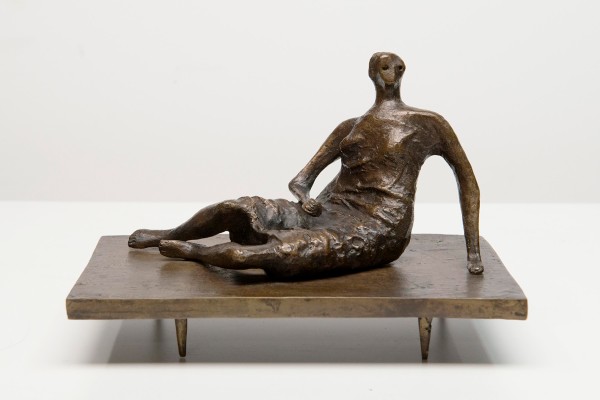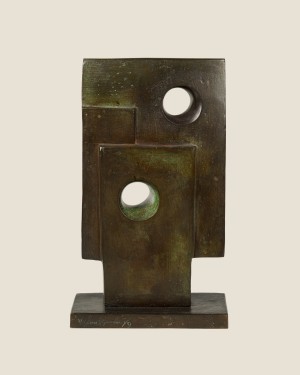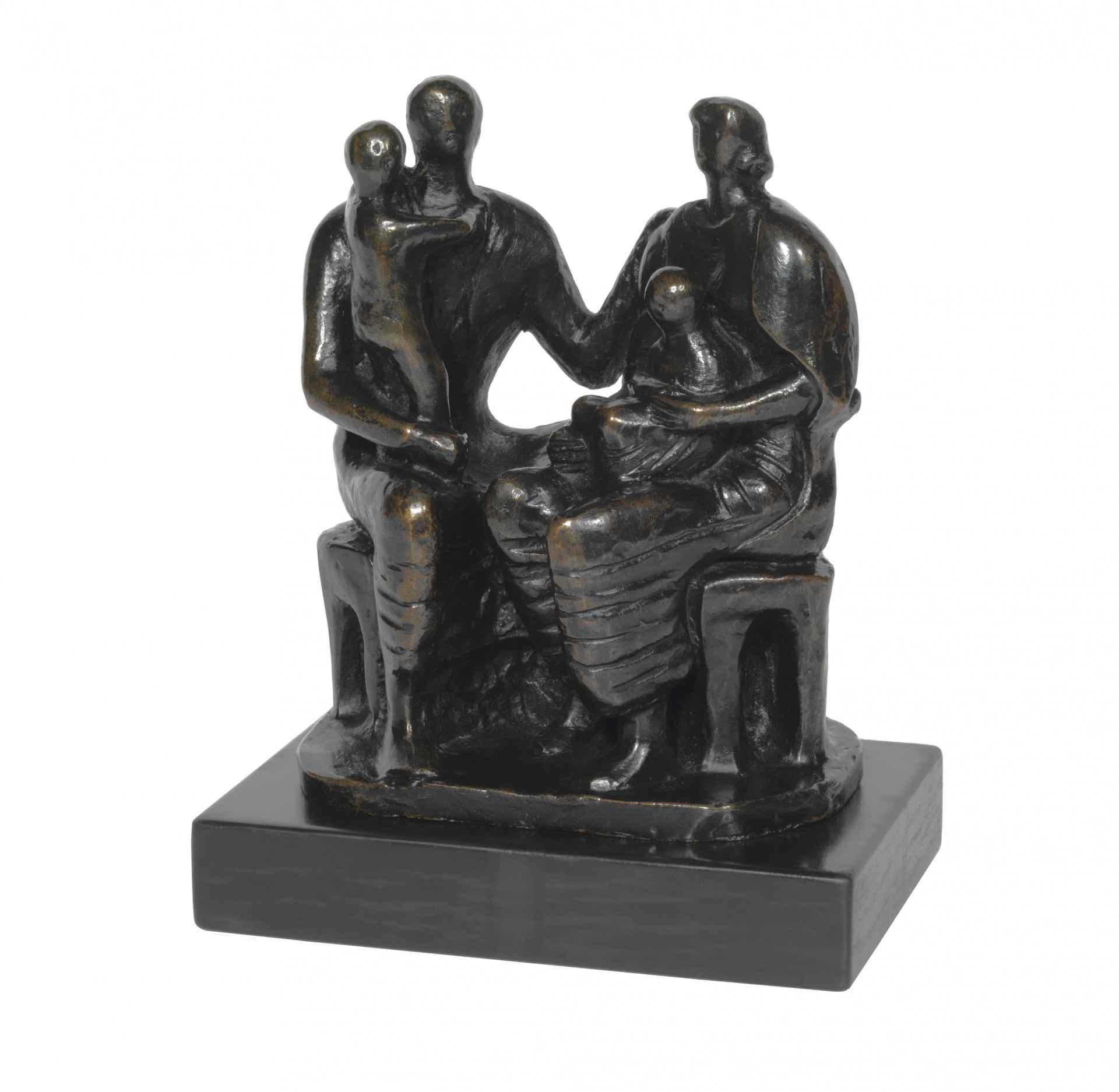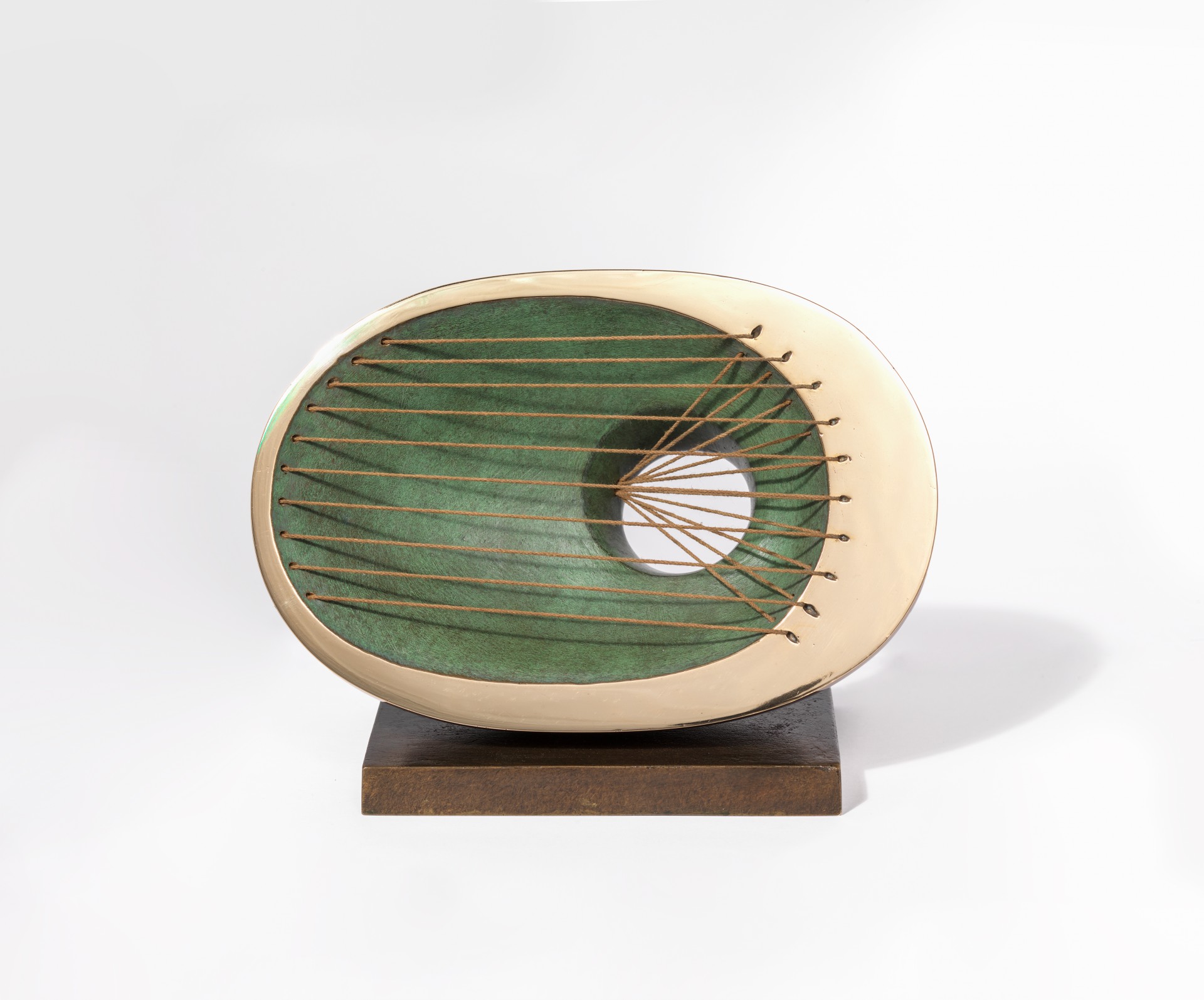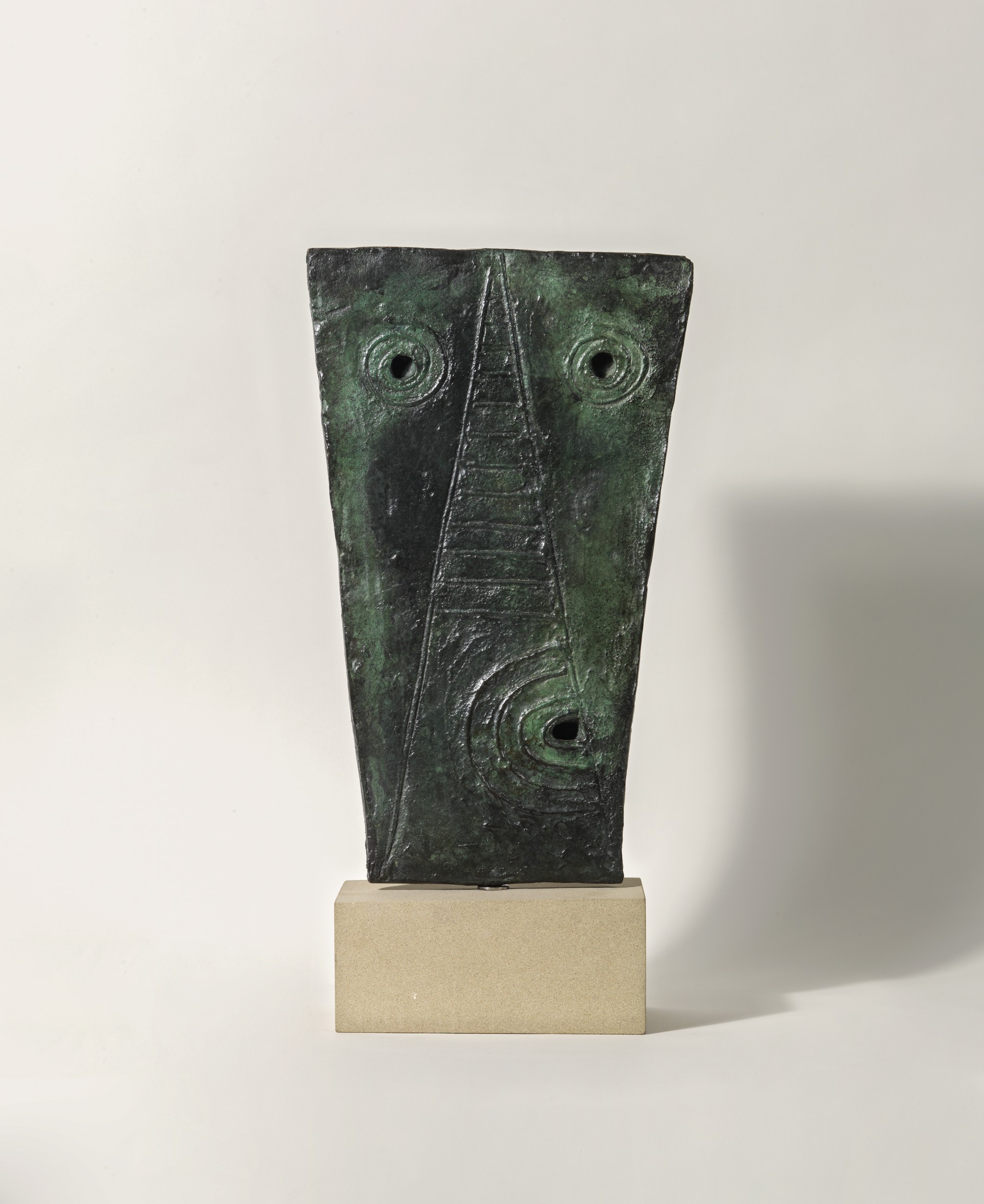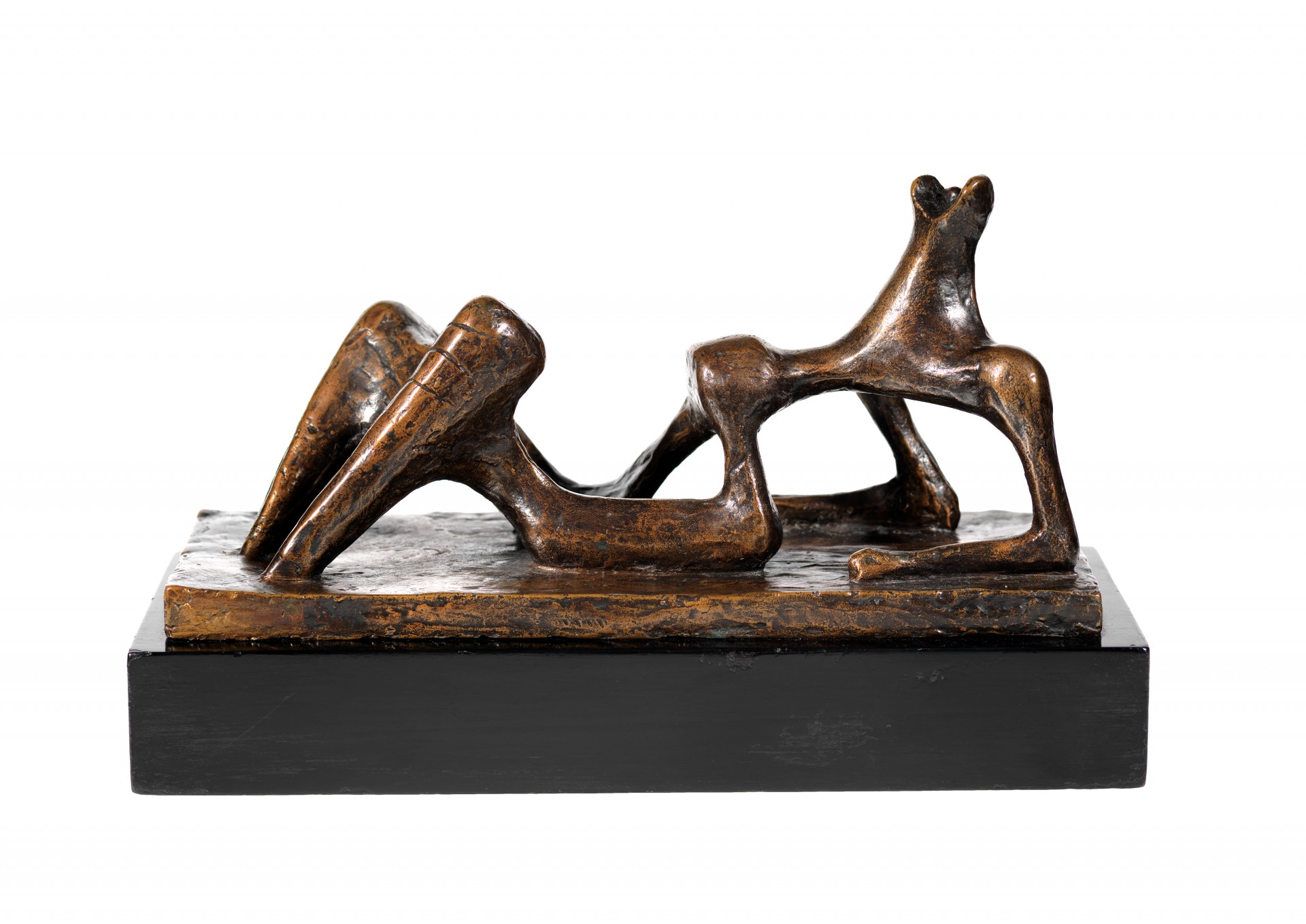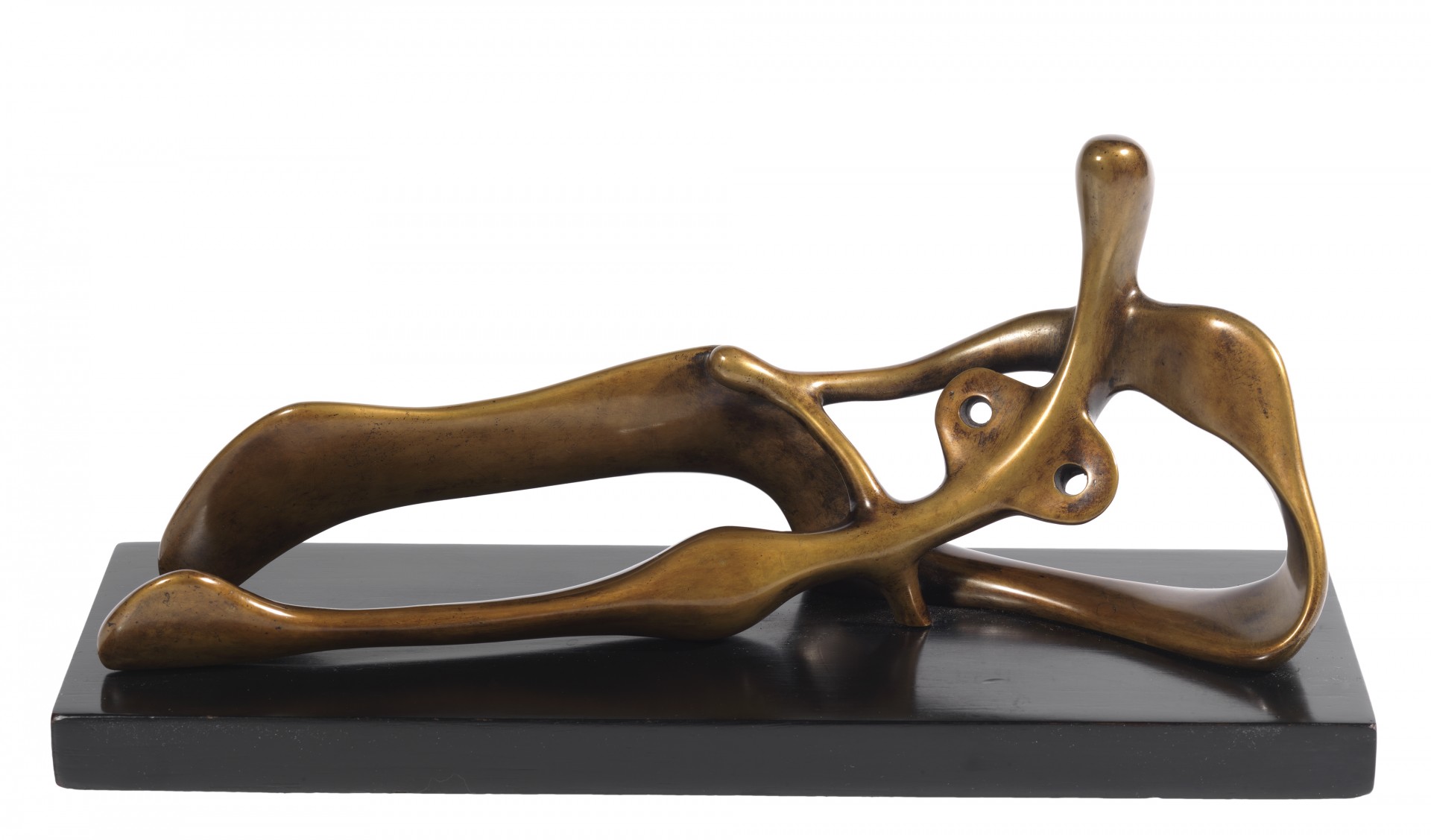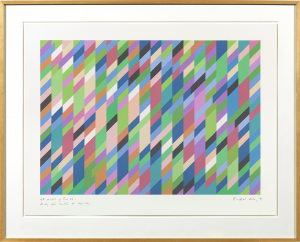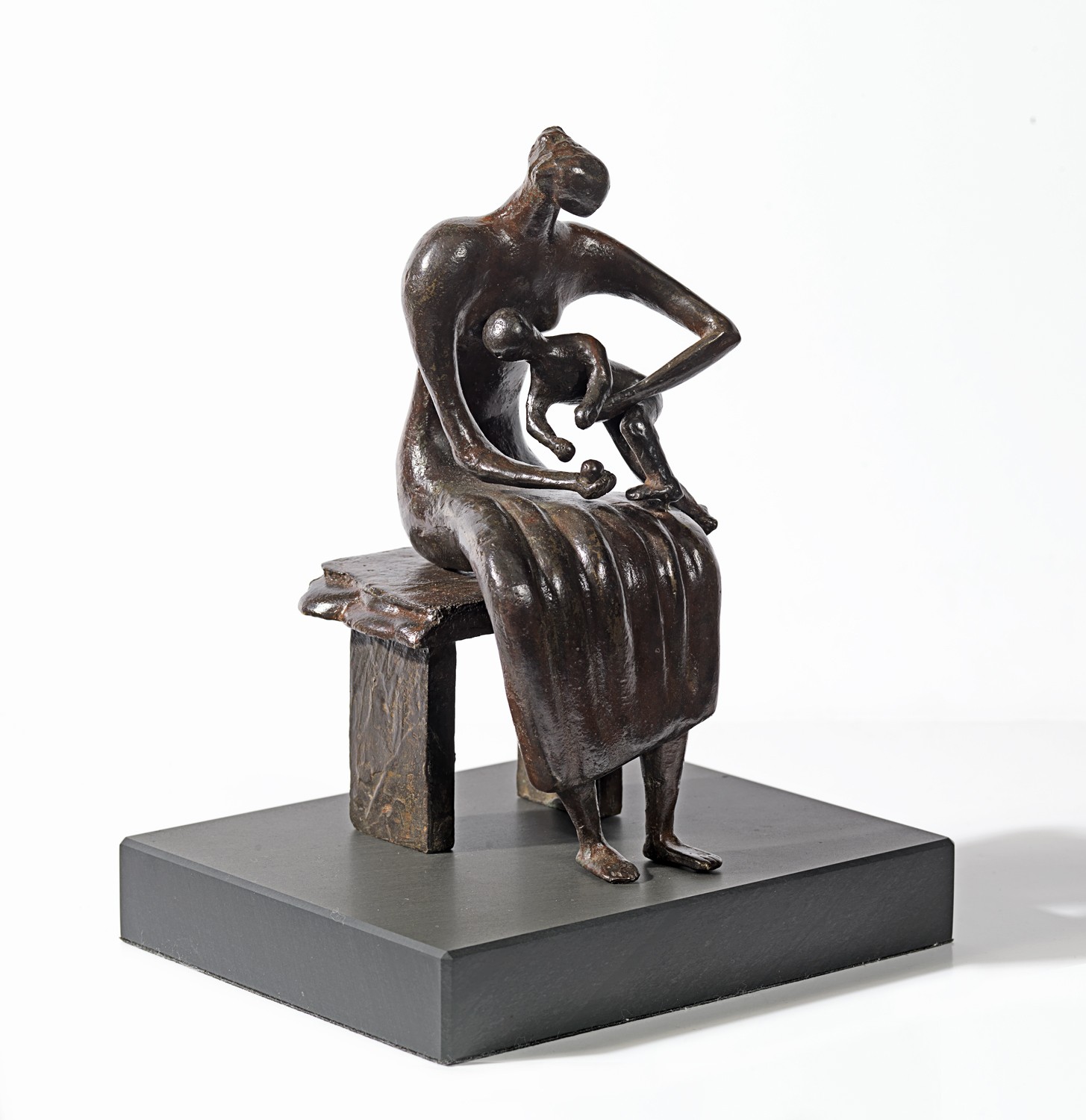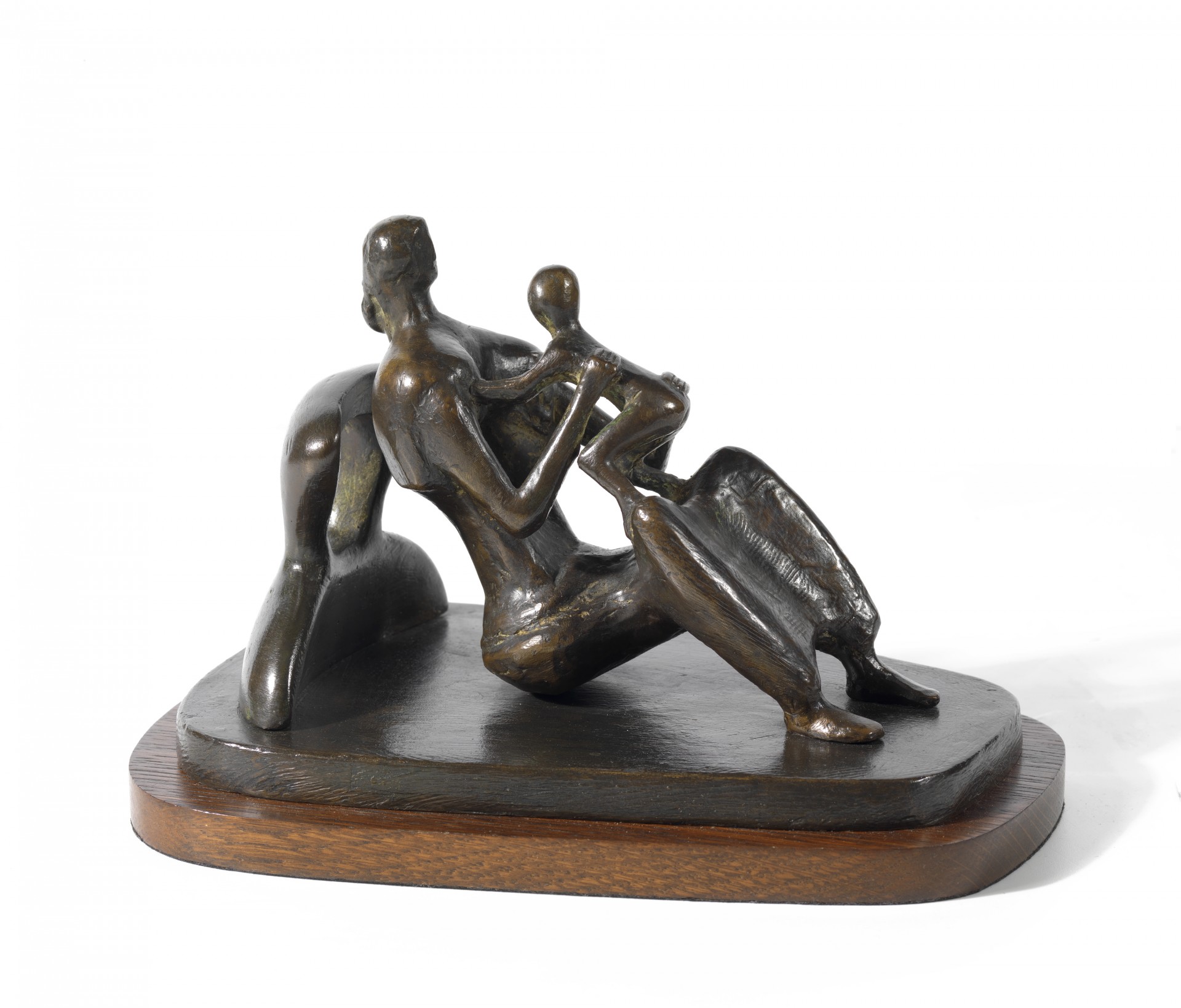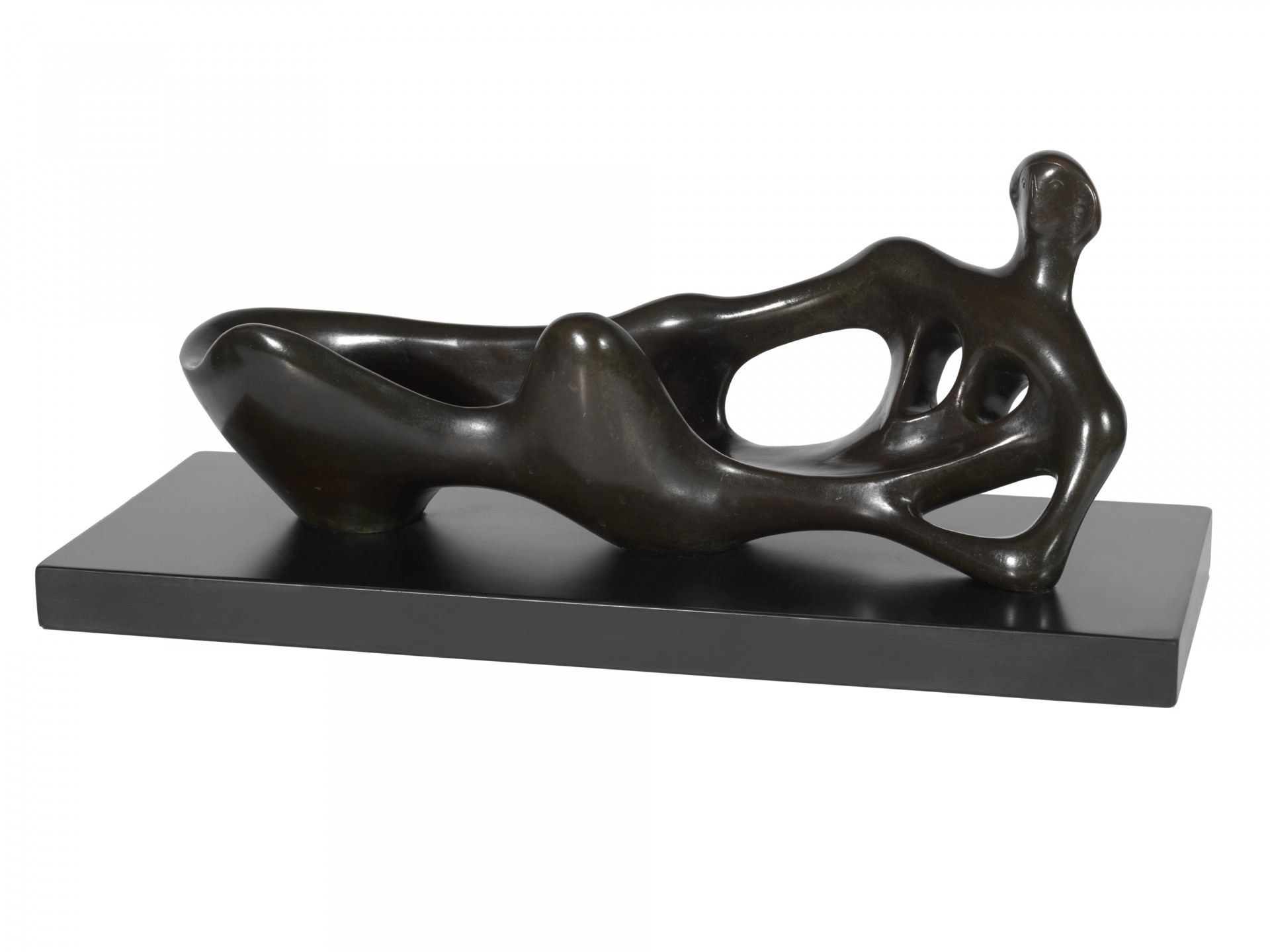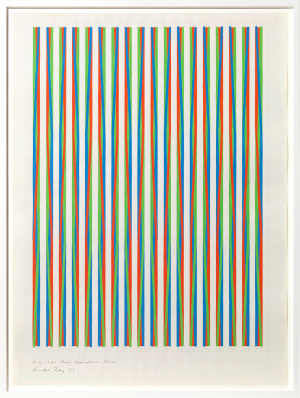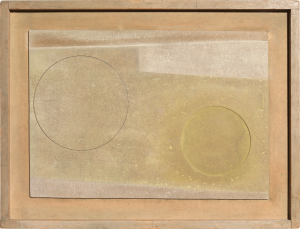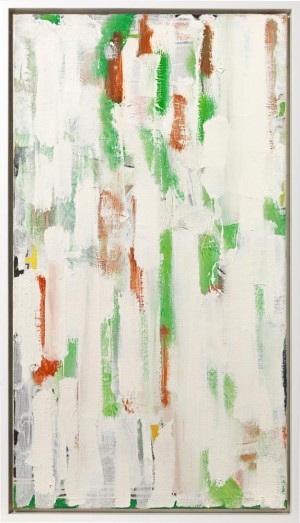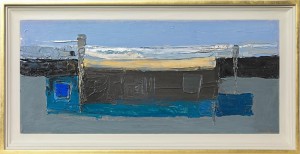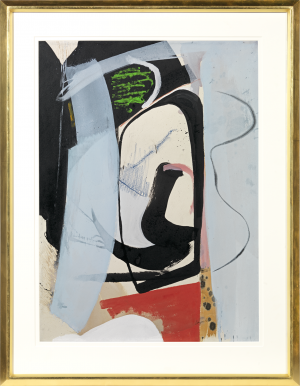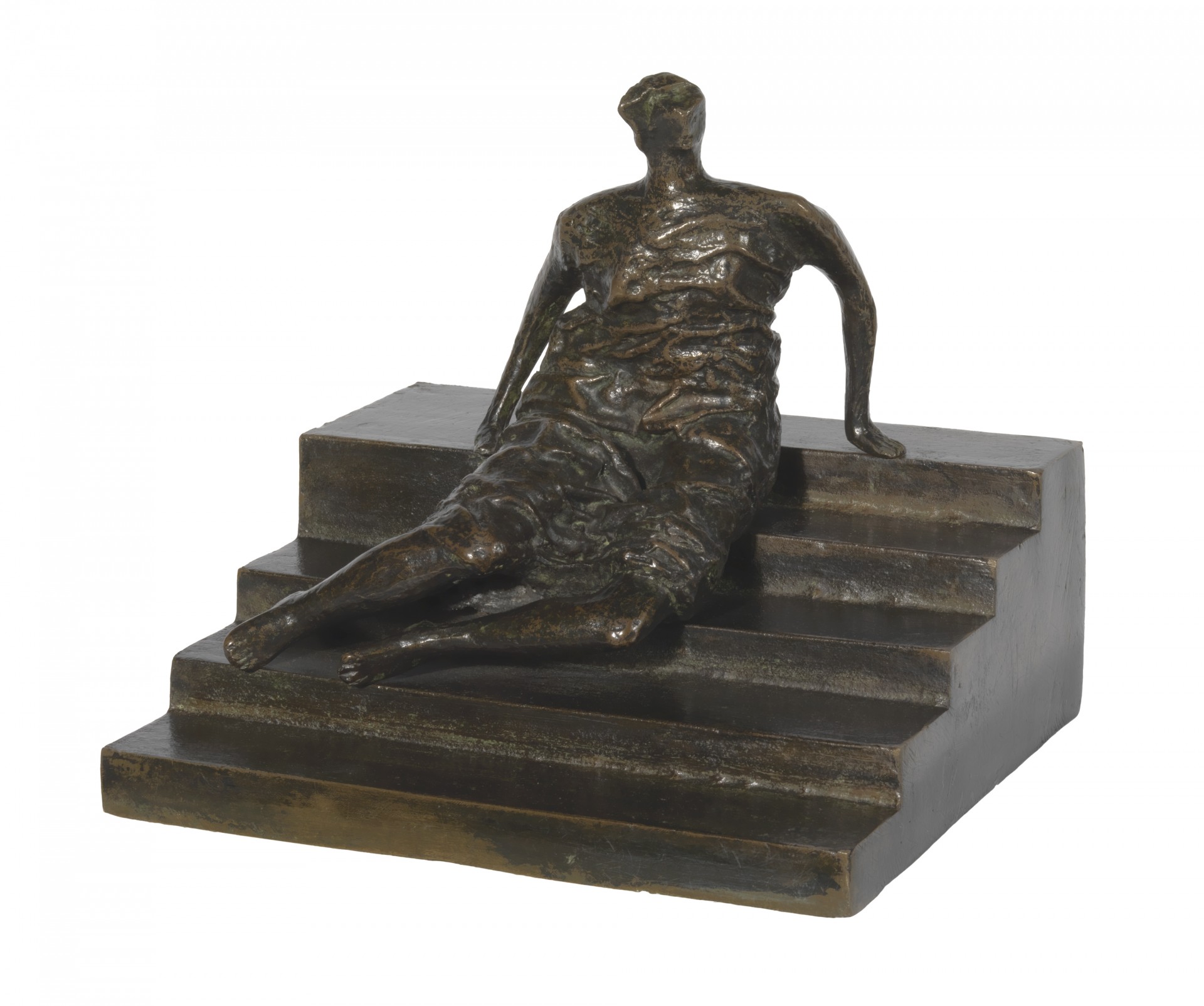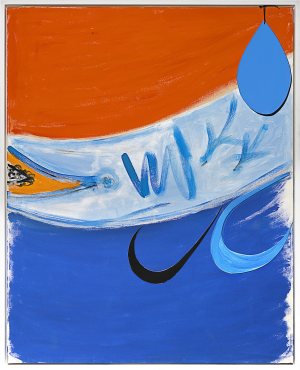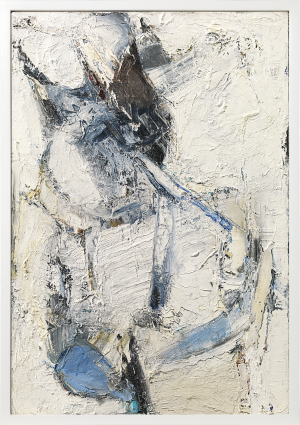Henry Moore
Family group
Mixed media on card: 25 x 20.5 (in) / 63.5 x 52.1 (cm)
Signed and dated lower right: Moore / 48
This artwork is for sale.
Please contact us on: +44 (0)20 7493 3939.
Email us
HENRY MOORE OM CH
Castleford 1898 - 1986 Much Hadham
Ref: BL 116
Family group
Signed and dated lower right: Moore / 48
Pencil, wax crayon, watercolour wash, pen and ink, brush and ink on card: 25 x 20 ½ in / 63.5 x 52.1 cm
Frame size: 36 x 31 inches / 91.4 x 78.7 cm
Recorded in the Henry Moore Foundation archives as HMF 2506
Provenance:
Ayala Zacks-Abramov, Toronto & Jerusalem, purchased directly from the artist,
then by descent
Exhibited:
Toronto, Art Gallery of Toronto, A Selection from the Ayala and Sam Zacks Collection: Nineteenth and Twentieth Century Paintings and Drawings, 1956-57, cat. no. 80, illustrated in catalogue p.60, pl.50
Literature:
Ann Garrould (ed.), Henry Moore, Complete Drawings, 1940-1949, Vol. III, The Henry Moore Foundation in association with Lund Humphries, London, 2001, p.286, no. AG 48.38 (HMF 2506)
This exceptional Family group is part of an important series of large, highly finished drawings executed by Henry Moore in 1948, representing the culmination of his meditations on the theme inspired by a public commission with personal significance.[1] The intricately modelled, monumental seated figures seem to radiate light and solidity, their tight-knit arrangement of interwoven arms and legs forming a central, circular space in which the object of the parents’ and picture’s focus tentatively stands. In contrast to the frontal or linear organisation of other Family groups of this date, Moore’s contained and beautifully balanced family of three turn to face each other, connected by and devoted to the protection of their child. The dexterity of the figures’ three-dimensional description adds to the strength and positivity of the composition. Their elegant, overlapping limbs, defined by the artist’s decisive and refined two-way sectional line technique in ink and crayon are thrown into relief by the balance of linear shading and wash
with glowing areas of wax-resisted card heightened with white. Their skilfully modelled elbows and knees seem to bend towards and simultaneously project out of the heart of the picture. Even the curved oval base upon which the family sits suggests a comforting containment. The stand, the luminous, rough textured appearance of the figures as well as the bricklike articulation of their setting, reveals the sculptural inspiration behind this highly finished, rich and sophisticated drawing.[2]
The idea of the family group originated from a public commission for Village College Impington, suggested to Moore by the architect Walter Gropius in the late 1930s. The school aimed to employ the progressive educational ideas of Henry Morris, the Director for Education in Cambridgeshire, in particular that rural schools should provide facilities for parents as well as children, providing space for films, plays and lectures, to become the social centre of the community. This notion of family unity was to be realised in Moore’s sculpture.[3] Postponed by the advent of the War, Moore returned to the idea in 1944 when the commission was temporarily revived and began making ‘drawings in note book form of family groups.
From these notebook drawings I made a number of small maquettes…Some of the maquettes were ideas for bronze, but most of them were for stone because for the Impington school I
felt stone would be the suitable material.’[4] Moore was delighted in 1947 to receive a second public commission for a family group from John Newson, the Director of Education for Hertfordshire, for Barclay Secondary School, as it provided an opportunity to realise his ideas on the subject on a large scale. Having visited the site, Moore chose from his previous models on the theme, enlarging a terracotta Maquette of 1945. Moore made four large bronze Family groups for the project during 1948–49, the main sculpture situated at Barclay School, Stevenage, with the other three in the collections of the Tate, London, the Museum of Modern Art, New York and the private collection of Nelson Rockefeller, New York. Although the arrangement of the present drawing varies in several respects from the final sculpture, it retains perhaps its most important compositional element: ‘the child is shown in the arms of his parents, as though the two arms come together and a knot is tied by the child’.[5]
Notwithstanding the stimulus of these public commissions, Moore was fascinated by the subject of the mother and child throughout his career and executed numerous versions in a wide variety of media. ‘From very early on I have had an obsession with the Madonna and Child theme. It has been a universal theme from the beginning of time and some of the earliest sculptures we’ve found from the Neolithic Age are of a Mother and Child. I discovered, when drawing, I could turn every little scribble, blot or smudge into a Mother and Child…So that I was conditioned, as it were, to see it in everything. I suppose it could be explained as a “Mother” complex’.[6] In 1946 depictions of the bond of parental love took on an even greater personal resonance for Moore as his first and only child, Mary, was born on 7th March, named after her paternal grandmother and aunt.
Family Group, 1944
Watercolour, ink, crayon and chalk on paper: 52.3 x 44.9 cm
National Galleries Scotland [GMA 2065]
Family Group, 1948
Chalk, coloured wax crayon, wash and opaque white over graphite on paper: 53.9 x 67.6 cm
National Gallery of Canada, Ottawa, Massey Collection [4925]
Note on provenance Ayala Zacks-Abramov (1912-2011)
‘Through paintings we became aware of the acute sensitivity of drawings, so often the first expression of an artist’s inspiration. Interested in the creative processes as well as in the results, we found ourselves responding to drawings with a deep sense of intimate contact with the act of creation; our eyes and hearts were perpetually turning to them. Drawings led us to sculpture, and this is why in our collection there are so many drawings by sculptors – Rodin, Matisse, Giacometti, Henry Moore, to mention a few.’
Ayala Zacks, ‘Art as a way of life’, A Tribute to Samuel J Zacks from the Sam and Ayala Zacks Collection, Art Gallery of Ontario, Toronto, 1971.
Ayala Ben-Tovim, collector and patron of the arts referred to as ‘Canada’s Peggy Guggenheim’, was born in Jerusalem, grew up in Tel Aviv and studied in London and Paris where she acquired a taste for modern art. While studying in Paris, Ayala met and married Maurice Fleg in 1938, joining the French Resistance after he was killed in action in 1940. After the War she met her second husband, the Canadian economist and art collector, Samuel Jacob Zacks (1904-1970), in Switzerland. They married in 1947 and moved to Canada. Sam and Ayala became prominent art collectors of international repute, acquiring masterpieces by Pissarro, Gauguin, Rodin, Picasso, Matisse, Kandinsky, Chagall, Miró, Klee and Giacometti amongst others, assembling an extensive collection by the late 1950s that was in continual demand by museums around the world.
Sam and Ayala also supported and encouraged young, emerging artists, including Dubuffet, Tàpies and Davie. They had close relationships with many artists, Henry Moore being one of the most illustrious. As well as resulting in the purchase of a number of his works, their friendship paved the way for a gift of Moore sculptures to the Art Gallery of Ontario and the Israel Museum, Jerusalem. Along with numerous long-term loans, in 1956 the couple donated a collection of Canadian art to Queens University, Sam Zacks’ Alma Mater, the first of several significant gifts to institutions in Israel and Canada, including Hazor Archaeological Museum, the Royal Ontario Museum and the Art Gallery of Ontario (a gift of more than 300 works which formed the basis of their modern European art collection). The Ayala and Sam Zacks Pavilion at the Tel Aviv Museum was built in 1971. The Israel Museum also has a wing named after Zacks-Abramov.
Sam and Ayala sat on numerous art Boards for the International Committee of Museums (ICOM), UNESCO, the International Committee of the Museum of Modern Art, the Art Gallery of Ontario and others. Sam received an Honorary Fellowship from St Peter’s College, Oxford in 1969, the year before his death in Toronto. Ayala Zacks was awarded the Order of Canada and an honorary degree from the University of Toronto. Following Sam’s death, Ayala returned to Israel and married her third husband, Zalman Abramov, a lawyer and politician who legislated the Museums Law in 1976. Mrs Zacks-Abramov established a Trust Fund at Toronto’s York University in the name of her late second husband for Fine Arts students.
In his introduction to the exhibition of Ayala and Sam Zacks Collection, the Director of the Royal Ontario Museum, Theodore Allen Heinrich, wrote of the collector’s ‘…deep interest in the processes of artistic creation, particularly as here shown in a variety of important drawings, a respect for craftsmanship, for integrity of line, form and colour, and a sure eye for a moment of triumphant synthesis in the development of an artist are all talismans which have contributed strongly to the attainment of an impressively high level of both quality and interest in the collection.’ (Art Gallery of Toronto, op. cit., p.5)
HENRY MOORE OM, CH
Castleford, Yorkshire 1898 - 1986 Much Hadham, Herts
The seventh child of Raymond Spencer and Mary Moore, Henry was born in Castleford, Yorkshire in 1898. His paternal great-grandfather was of Irish origin, but his father and grandfather were born in Yorkshire where, for two or three generations, they worked the land or went down the mines. At the age of twelve Moore obtained a grant to study at the Grammar School in Castleford where he was inspired by his art teacher to pursue a career in the arts. In 1916 he began to teach, but by February 1917 he had joined the army and left to fight in
France.
After being wounded in action in November 1917 at the battle of Cambrai, Moore was excused from active service. He returned to England, where he became a physical education instructor in the army. At the end of the war, Moore received a veteran’s grant to study at Leeds School of Art and in 1921 he joined a course at the Royal College of Art in London. A further grant enabled him to travel extensively from 1925, visiting Rome, Florence, Venice, Ravenna and Paris, where he met Picasso, Giacometti, Ernst, Eluard and Breton among others.
On returning from his travels Moore was appointed Professor of Sculpture at the Royal College of Art where he worked two days a week until 1931, as well as teaching at the Chelsea School of Art until 1939. He was appointed an Official War Artist during the Second World War from 1940–1942 for which he made a series of drawings of people sheltering in the London Underground, as well as studies of miners at the coal face. In these pictures he frequently used
watercolour over wax crayon.
After the war Moore enjoyed a great deal of success, with his works receiving critical acclaim all around the world. He executed many major commissions for museums, public institutions, private collectors and municipal buildings and as a result he became one of the most famous British artists of the twentieth century.
At the beginning of the 1970s Moore created a foundation, the aim of which was to promote public awareness of sculpture and to protect his own work for the future. Located in his home village of Much Hadham, Hertfordshire, the foundation houses a library, archives and a collection of drawings, prints, maquettes and sculptures by the artist. Heavily influenced by the work of Michelangelo, Moore created monumental works in marble, stone and bronze and was enthralled by the theme of the family, and in particular the mother and child. His unique oeuvre draws inspiration from prehistoric, archaic, Egyptian, African, Mexican and Roman sculpture.
Throughout his career he was noted for his output of graphic art – drawings, watercolours, etchings and lithographs which were not necessarily related to individual sculptures.
[1] Other examples of large Family group drawings from 1948 are in the collections of the National Gallery of Canada, Ottawa and the Art Gallery of Ontario.
[2] Ann Garrould suggests that ‘Moore had probably seen the site at Barclay School, Stevenage, where the sculpture LH 269 was to be placed in front of a brick wall.’ AG. 48. 33, op. cit., p.285.
[3] A detailed account of the commission is recalled by the artist in Philip James, Henry Moore on Sculpture, MacDonald, London, 1966, pp.224–229.
[4] The artist cited in Alan Wilkinson (ed.), Henry Moore: Writings and Conversations, Lund Humphries, Aldershot, 2002, p.273.
[5] The artist cited in David Mitchinson (ed.), Henry Moore Sculpture, with Comments by the Artist, London, 1981, p.102.
[6] The artist cited in John Hedgecoe and H. Moore, Henry Spencer Moore, Simon and Schuster, New York, 1968, p.61.

